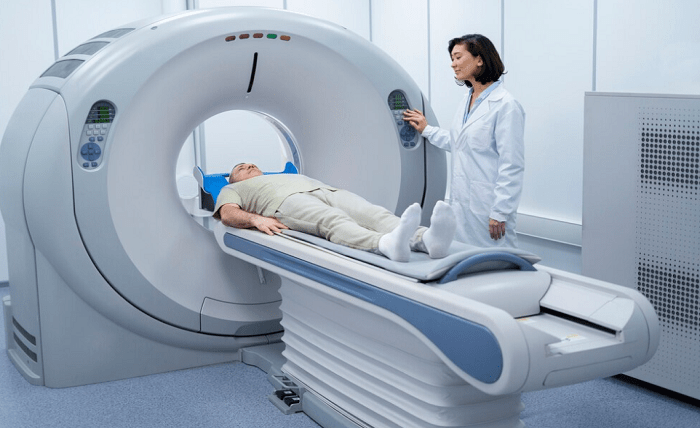The role of digital imaging in modern medicine is indispensable because it is used in diagnosing diseases; measuring the effects of treatment and therapies and in following the medical course of certain medical conditions. Through decades of competition among technical innovators, medical imaging has made enormous progress and is currently at the edge of outstanding breakthroughs with advancing imaging equipment as the head of the innovations. This article dives into the amazing ways modern imaging technologies are changing almost everything in the realm of healthcare, helping doctors with faster and more accurate diagnoses and medical procedures aiming at better wellness results.
The Evolution of Medical Imaging
Medical imaging is one of the fields that has been greatly enhanced from the primitive stages to the relatively sophisticated technology developed to date. Indisputably, it is nowadays one of the crucial methods in the healthcare system. The tragic trip of imaging in medicine shown in history is the principal foundation and the steps to modern hi-tech imaging devices, which possess a very detailed impact on the diagnosis and the treatment.
The medical imaging is the shining and golden story that burst into existence with the invention of an X-ray by Roentgen in 1895. This is the turning point for the field of medicine, which gives the ability to perform data imaging on computed tomography (CT) scans, magnetic resonance imaging (MRI), and ultrasound. This is where researchers may have taken the first steps for all the innovative imaging methods that we take advantage of currently.
Key Milestones and Advancements
Medical imaging has made significant progress over time with the most prominent areas of advancement. It started 17 years ago by introducing digital imaging and placing new medical imaging modalities such as PET and SPECT, and now the field of medical imaging is tremendously developed. These landmarks have formed the foundation for imaging technology.
State-of-the-Art Imaging Technologies
The exciting evolution in medical imaging technology over the past few years has gone through a forward integration, and this facilitated the development of recent high-tech tools that transformed conventional approaches to diagnosis and healing in the health sector. Nowadays, imaging tools have a particular opportunity to grasp the very peculiar insides of the human body that weren’t humanly attainable before the moment of modernism. They later on process the provided data and draw exact conclusions that serve as the guidelines for their targeted therapy. Below are some of the state-of-the-art imaging technologies and their transformative impact on healthcare:
Precision Medicine: Using Imaging Insights to Target Treatments
Access to superb imaging technologies does help people get a precise and individualized approach to medical treatment as they enable identification of each patient’s anatomical and physiological features. With this exactness, personalized therapy plans can be created to get the desired therapeutic outcomes while the side effects are minimal.
Reducing Diagnostic Pathways
Efficiency, the milestone of modern healthcare, is now blessed with the creation of advanced imaging technologies, which in turn saved many patients from exhausting days used as diagnostic workflows. In addition, the speed and accuracy of imaging outcomes help increase the speed of decision-making, decreasing the time needed to start appropriate treatments.
Innovations of 3D and 4D Imaging Imaging
The ability to see in 3D and 4D dimensions enables a whole suite of dynamic and time-variant data. Such innovations aid in cardiology and obstetric spheres where close imaging is essential for the complete examination.
Artificial intelligence systems in medical imaging
AI have long been involved in medical imaging technologies, and they can go further in providing health analytics, image recognition, and automation. AI-equipped algorithms are prevalent in picking out mild abnormalities which in turn help in the diagnoses stage that is not previously accurate earlier than ever before.
Progression in Real-Time Imaging Systems
The imaging function has, over time, become more and more instantaneous, with the constant display during surgical operations or interventions included. This real-time feedback provides outstanding results with respect to procedural accuracy and reduces the dangers attached to some medical procedures.
Point-of-Care Imaging: Rapid Assessments for Immediate Actions
These are systems developed to gain a comprehensive understanding of a particular situation with quick feedback to ensure that the response can be timely and hopefully save the lives of immediate casualties.
Enhanced Patient Experience with Comfortable Imaging
Advanced imaging equipment has improved diagnostic accuracy and prioritized patient comfort. Open-bore MRI machines, for example, reduce anxiety and claustrophobia, promoting a more positive patient experience.
Aerial Imaging and Telemedicine
Telemedicine has become increasingly more widespread. It can be seen in underserved or hard-to-reach locations. Advanced imaging technologies play the role of the-see-doctor interactions, while health professionals can order and interpret diagnostic images from afar.
The Earlier The Disease Conditions Are Diagnosed
Getting the diagnosis early is vital in successful treatment, and the use of diagnostic tools like whole body imaging and molecular imaging in the search for diseases at their early stages is being recommended.
Future Directions: Innovations and Trends in Medical Imaging
The future of medical imaging carries forth a great deal of promise, which now is to be the days of continuous innovations to further revolutionize diagnostics and treatment of the future where good outcomes for patients will be achieved. This part highlights the tremendous revolution brought forth by some unique technologies, subsequently uncovering the new trends and potential innovations that could ameliorate diagnostic values and treatments.
- Growing trends and cutting-edge solutions in the advancement: As technology continues to evolve, a few innovations, like the integration of virtual reality (VR) and augmented reality (AR) in clinical imaging, as well as imaging for surgical planning, are expected. These technologies will improve visualization plus surgical planning.
- Prospects at development that may speed diagnostics and treatment in the long run: Planned progress involves developing lighter and more compact imaging devices, further enhancement of AI applications, and research on experimental techniques that can surpass the limits of present optical resolution.
Final Word
Take today A+ Medical on your journey and let it bring you new tomorrows in the healthcare field. Helping healthcare providers, whether in hospitals, clinics, or private healthcare practices, and delivering service as a trusted provider of new, used, and refurbished medical imaging equipment and parts globally. Explore the comprehensive disciplines to comprehend the best medical products. Healthcare solutions are the cornerstone of APlus Medical – the brand you can trust for advanced diagnostic procedures and treatment. They will take care of your medical imaging supplies today.



